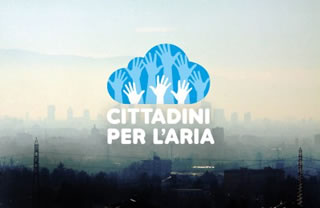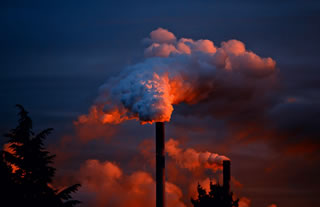
|
|
|
Gli Scomunicati - Quotidiano indipendente online dal 2006 - Fondato e diretto da Emilia Urso Anfuso
Registrazione Tribunale di Roma N° 3 del 21 Gennaio 2014
|
Introduction --------------------------------------------------------------------- Introduction The State of Global Forests and Deforestation Deforestation is caused by exploitation of natural resources—including expanding populations, logging, agriculture, biofuel production, and wildfires. Clearing forests for the production of biofuels is causing major concern, as experts contend that it has a significant negative impact on forests without doing much to reduce greenhouse gas emissions. The FAO report shows that the greatest overall loss is occurring in Africa, followed closely by Latin America and the Caribbean. Indonesia has the fastest deforestation rate of any single country in the world. When emissions from loss of forests are taken into account, Indonesia could be considered the world's third-largest emitter (PDF) of greenhouse gases, according to a recent World Bank report. Indonesia recently has made a show of planting 80 million trees ahead of the Bali conference, but some question the country's long-term commitment to slowing exploitation of its valuable resources, such as stemming illegal logging. China's rapid growth in the production of manufactured goods that need wood also poses challenges. The country's consumption of forest products leads the world. According to Forest Trends, a nonprofit research group, China's increasing demand (PDF) has lead to unsustainable and sometimes illegal logging practices in many of the countries seeing significant deforesting activities, such as Indonesia and Papua New Guinea. "China has a seemingly limitless appetite for cheap wood," says Don J. Melnick, a conservation biology professor at Columbia University. Products made from this timber often wind up in U.S. and European markets. Richard Z. Donovan, chief of forestry for the Rainforest Alliance, an advocacy group, says that right now China is not only adding to climate change by burning large amounts of fossil fuels that emit greenhouse gas but also by being a "non-discriminating buyer" of wood.
The Union of Concerned Scientists estimates that U.S. forests absorb between one million and three million metric tons of carbon dioxide each year, perhaps offsetting between 20 percent and 46 percent of the country's greenhouse-gas emissions. Carbon Offsets from Forestry One requirement of the UN credits mechanism presents particular difficulties for forestry projects. Roger A. Sedjo, a forestry expert for Resources for the Future, an environmental think tank, says Kyoto's "additionality" requirement—proof that project emissions outcomes would not have occurred without intervention—encourages "crummy projects" that are less effective and difficult to approve. It is extremely difficult to prove that these emissions reductions would not have occurred anyway. Reservations about Forest Carbon Sinking Others environmentalists are concerned that forestry projects will lead to less biodiversity and an erosion of rights for indigenous forest dwellers. In Uganda, for example, a reforesting project became embroiled in a battle (Fortune) over land access between the government and local farmers living at the forest's edge. Donovan says the best way to prevent such problems is to make sure indigenous groups are allowed to participate in negotiations on policy for their area. Some environmental advocates remain cautious about including forest management in climate-change protocols because they worry it will distract from mitigating emissions caused by fossil fuels. Currently, "avoided deforestation" remains outside the climate policy mix. But without avoided deforestation, some experts say that efforts to reduce greenhouse gas from other sectors will be more expensive and take twice as long. Some experts believe that deforestation rates in Indonesia and Brazil alone are enough to undo 80 percent of the emissions reductions designated under the Kyoto Protocol. Experts also say avoided deforestation is a less expensive option for reducing emissions when compared to options such as upgrading power plants. Forestry and Future Climate Change Policy Experts point out a successful deforestation program lies in its design. Two major "flash points" will complicate the deforestation policy debate—accounting for emissions reductions and paying for conservation. Some advocates would like to see emissions-reduction accounting by project, while others believe the only way to prevent deforestation from moving outside project areas is to account for emissions reductions countrywide. Experts say the assumption is that deforestation efforts will join the credit-trading system already underway. However, some people are pushing for a fund that governments would pay into for designated forest conservation. Melnick notes that a fund would be less effective than a market-based mechanism because governments would never put enough money into the fund. "We can't get money into funds for starving children and people with AIDS," Melnick argues. "So getting money for trees is complete fantasy." In a CFR.org Podcast, Joshua Busby, an expert on climate change politics, also notes there is debate about whether avoided deforestation monies will be dispersed to governments, large corporations or local communities. With carbon credits selling at about twenty dollars per ton on the European market, experts say a market-based mechanism would provide enough incentive to avoid deforestation. Donovan says timber and agriculture opportunities from forest land often provide less than a dollar per acre. One exception may be biofuel production; as costs for ethanol increase, experts expect to see greater pressure on forests, even with market credits in place. And some people worry that adding deforestation credits to the market will depress current carbon prices, although other note that plans to expand emissions caps to more industry sectors and the possible inclusion of the United States may increase the need for credits. Other issues also need attention, such as reducing the complexity of the UN's project accrediting system to open it up to more people. Another issue is whether avoided deforestation will be included within the current UN mechanisms or if a new type of mechanism will be created. Setting baselines—how much emissions reductions—for avoided deforestation projects also need to be decided. And some people are pushing for carbon sequestration from wood products, such as furniture, to be included. But Harvey contends that may be too complex.
|
|
Cosa ne pensi? |
|
|
Per commentare l'articolo occorre essere loggati e rispettare la netiquette del sito. Se sei registrato effettua il login dal box qui a sinistra. Se ancora non sei registrato fallo cliccando qui |
| I commenti: | |||
|
Commento
1)
|
|||
| Commento di: emilia.urso | Ip:83.73.103.204 | Voto: 7 | Data 15/08/2025 15:05:30 |
Sei
iscritto su Facebook, Twitter o G+?
Commenta e condividi l'articolo direttamente.
Cos'è uno Stato senza i cittadini? Nulla. Cosa sono i cittadini senza lo Stato? La risposta la conosciamo tutti, perchè lo Stato italiano palesemente, sta lasciando alla deriva la motivazione fondamentale della sua stessa esistenz
Categoria:Politica e Governo
Obbiettivo:50000 firme

In termini di ambiente, non è il cambiamento climatico a venire prima, ma la questione dell'inquinamento in senso lato.

Smog, tanto smog, troppo smog. È un dato di fatto: soprattutto nelle aree urbane respiriamo un’aria pericolosamente inquinata...

Asma e rischi cardiaci dovuti all'aria inquinata, alle infezioni e alla malnutrizione dovute al riscaldamento globale

Numerosi studi hanno già messo in evidenza l'impatto negativo dell'aumento delle temperature e della CO2 atmosferica sul riso
Testata ideata e diretta da Emilia Urso Anfuso. Note legali. Per informazioni commerciali e per entrare in contatto con la redazione potete chiamare lo 06 92938726 (Tel. e Fax) -